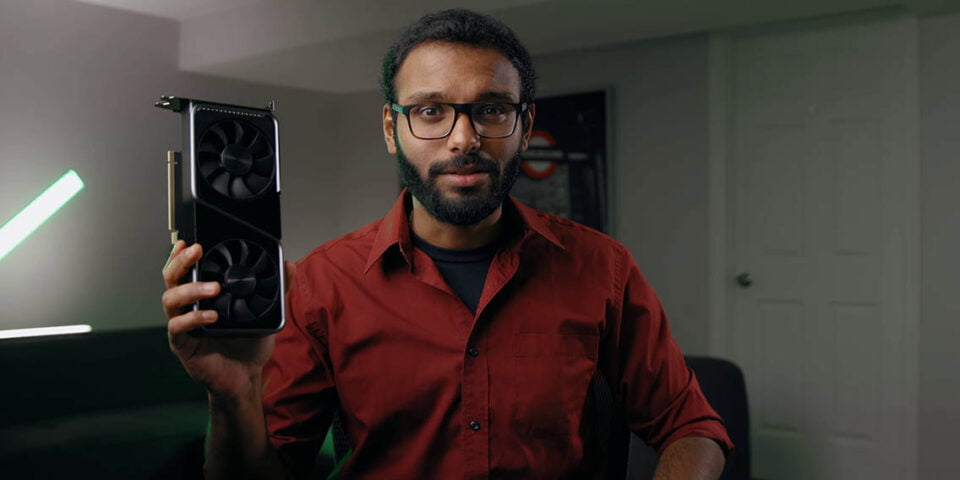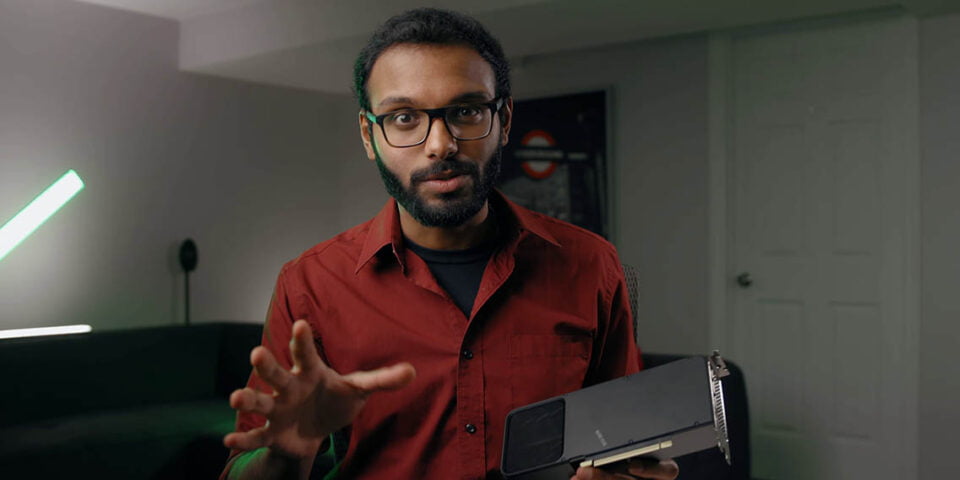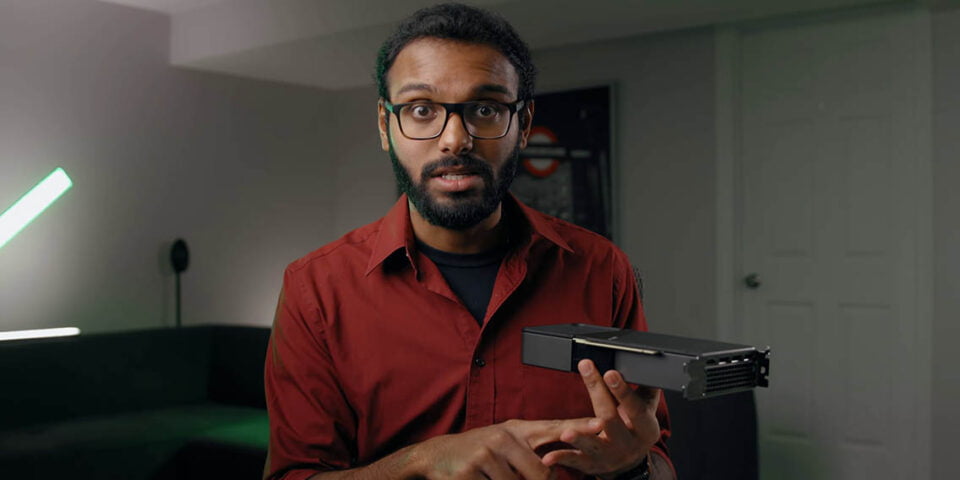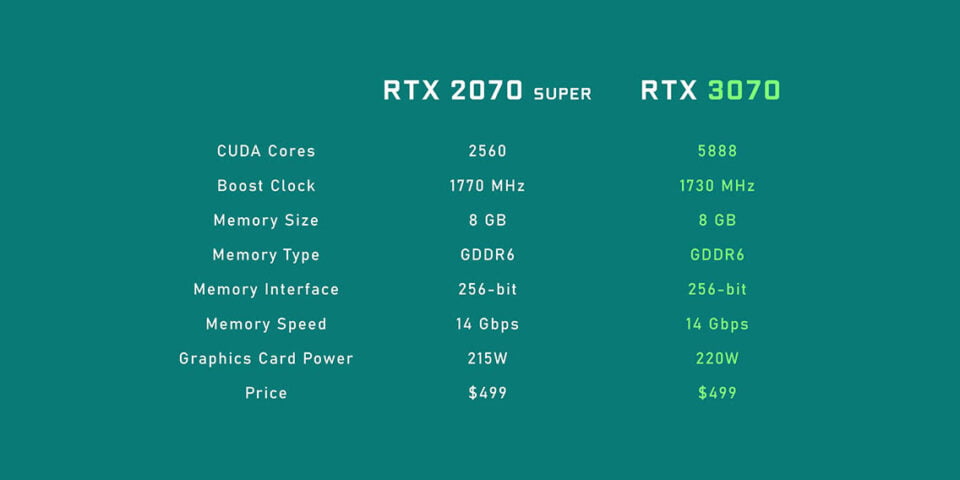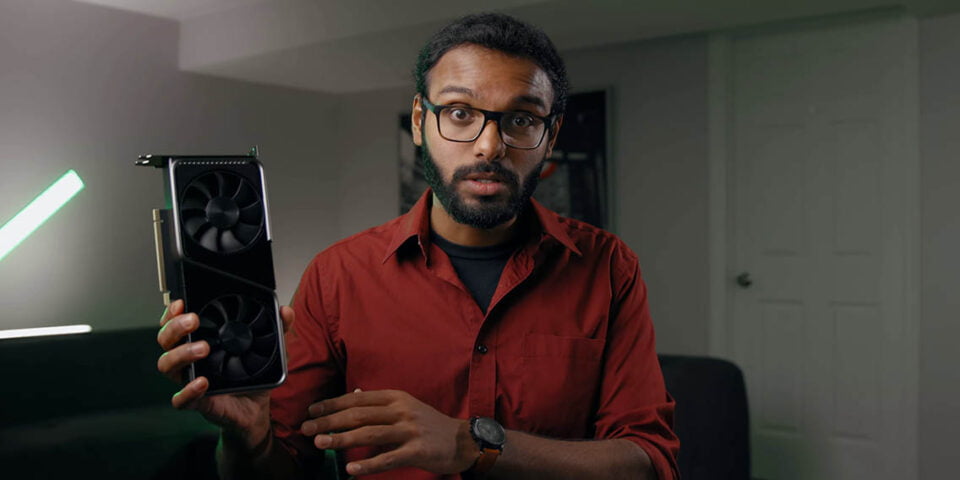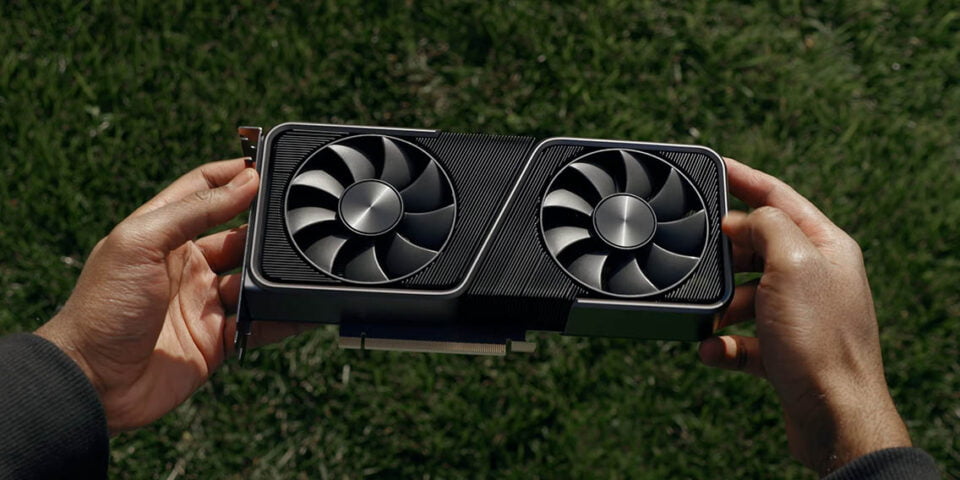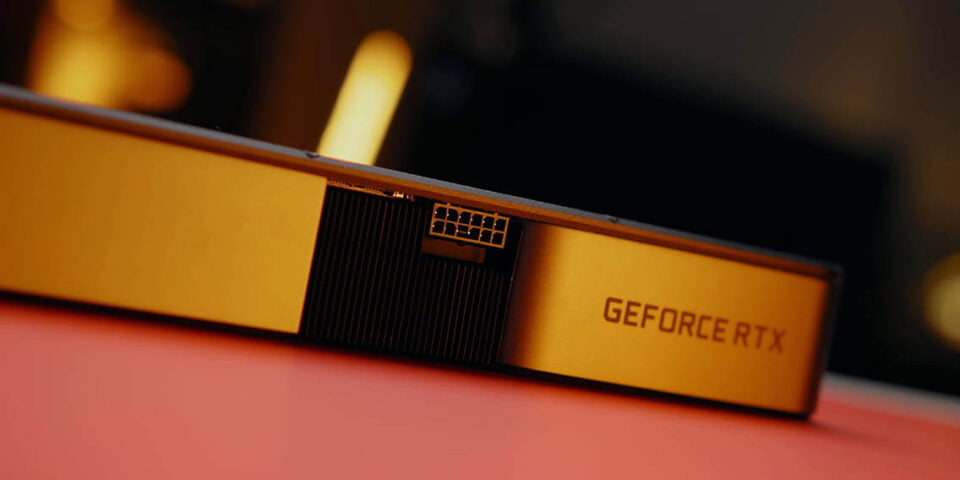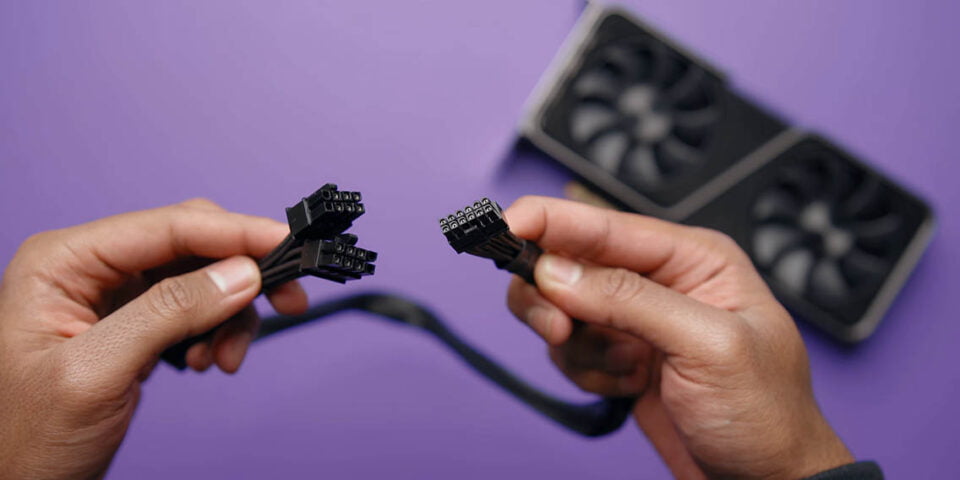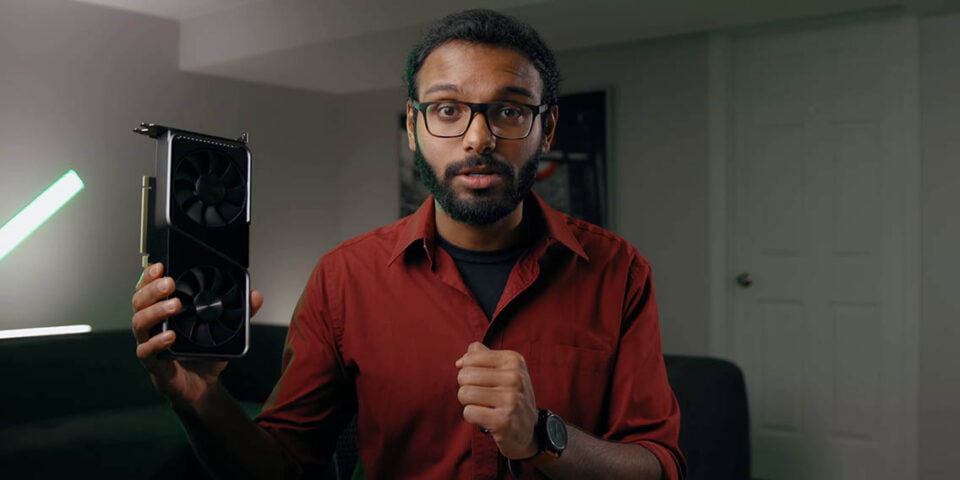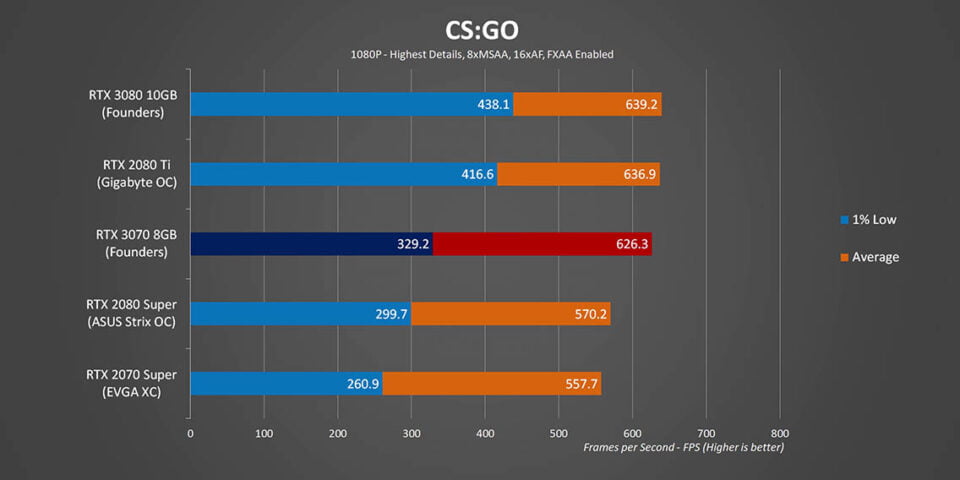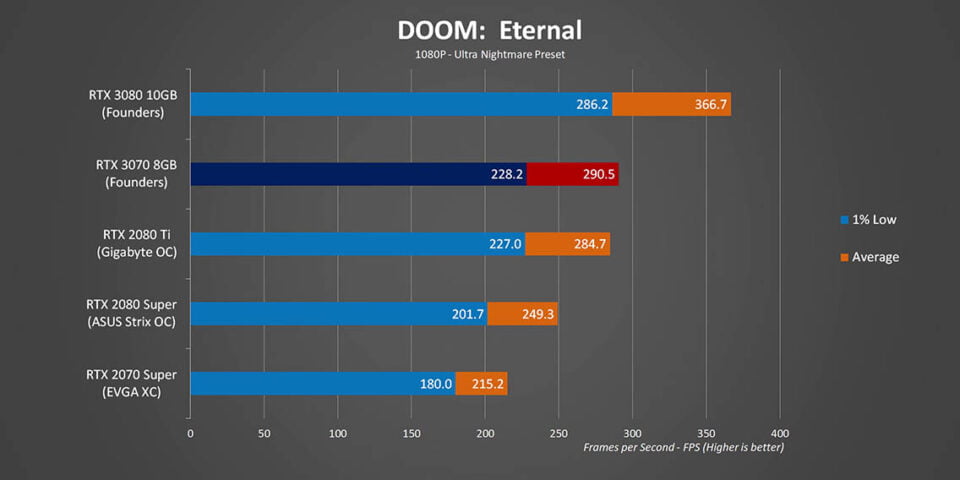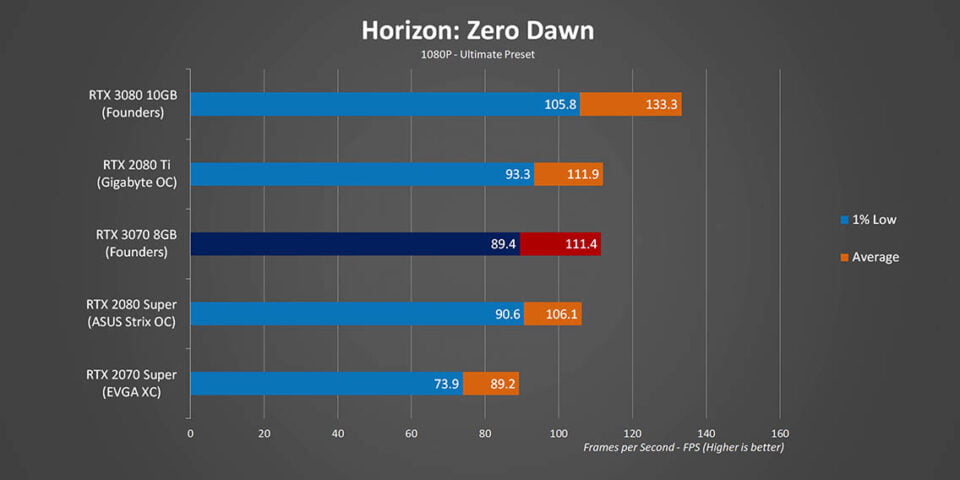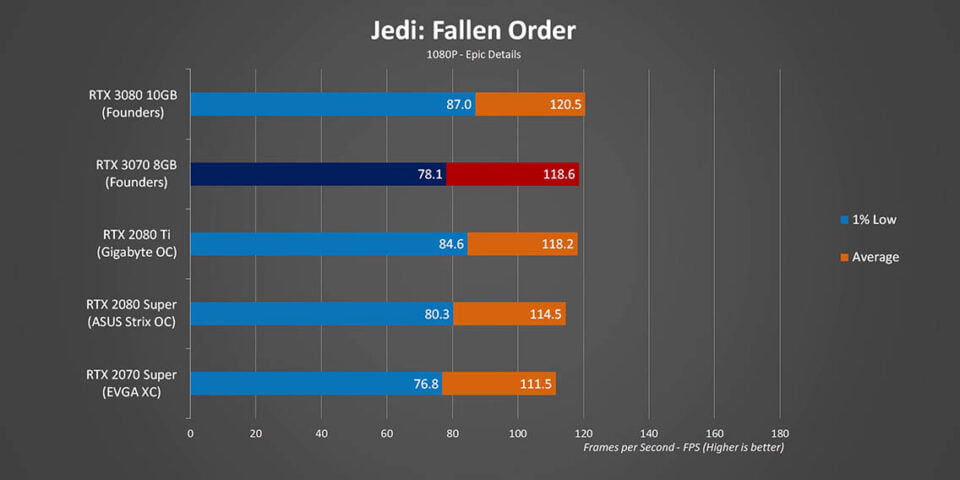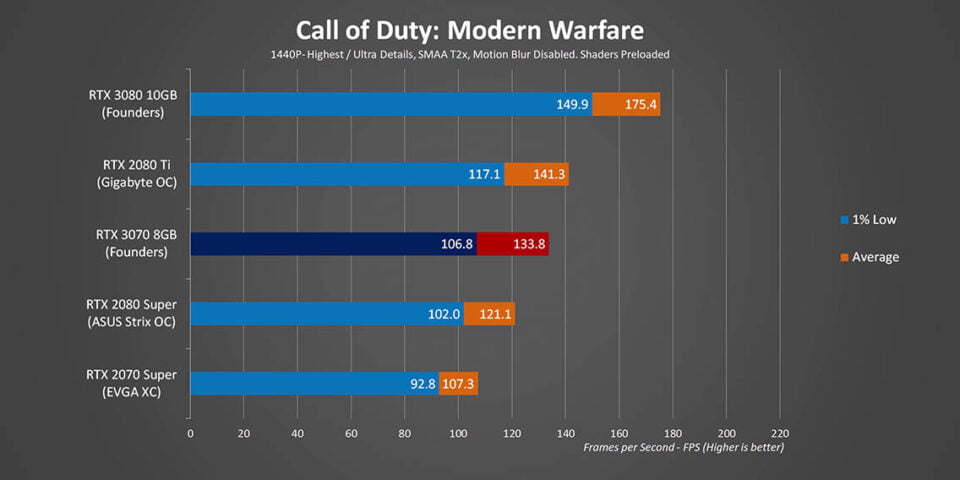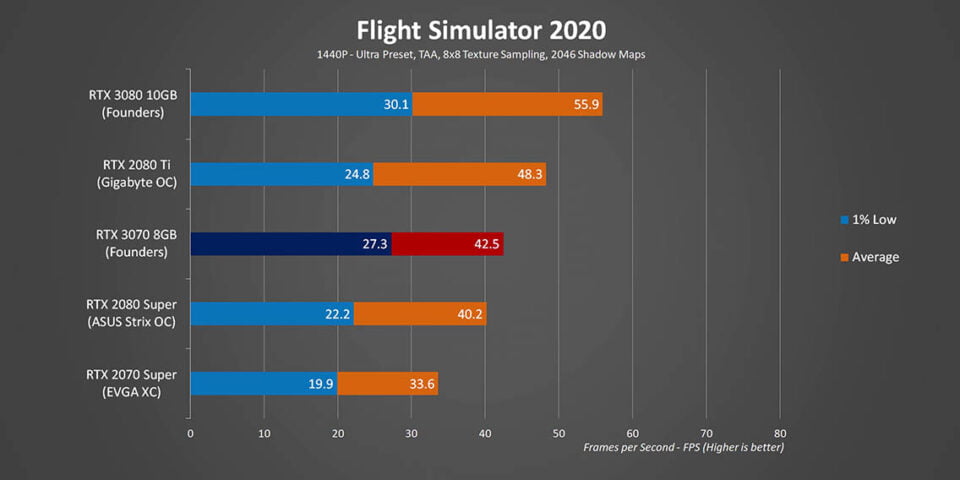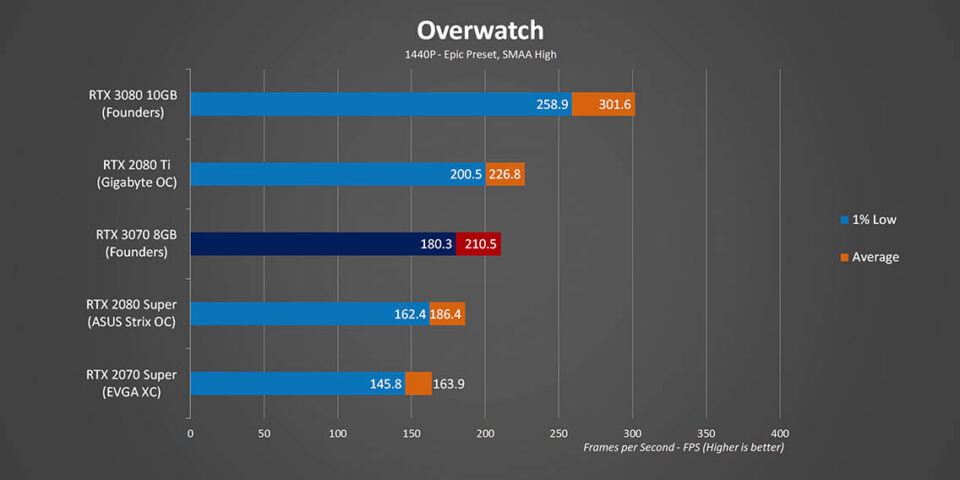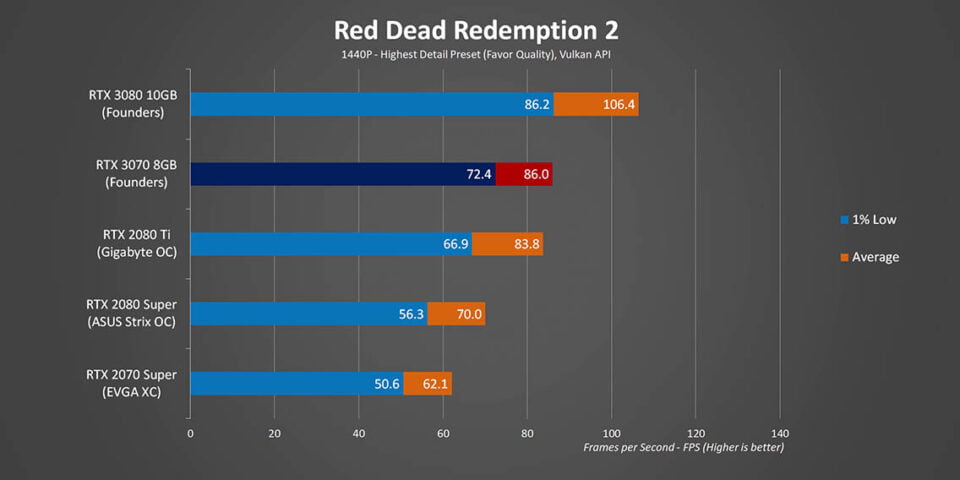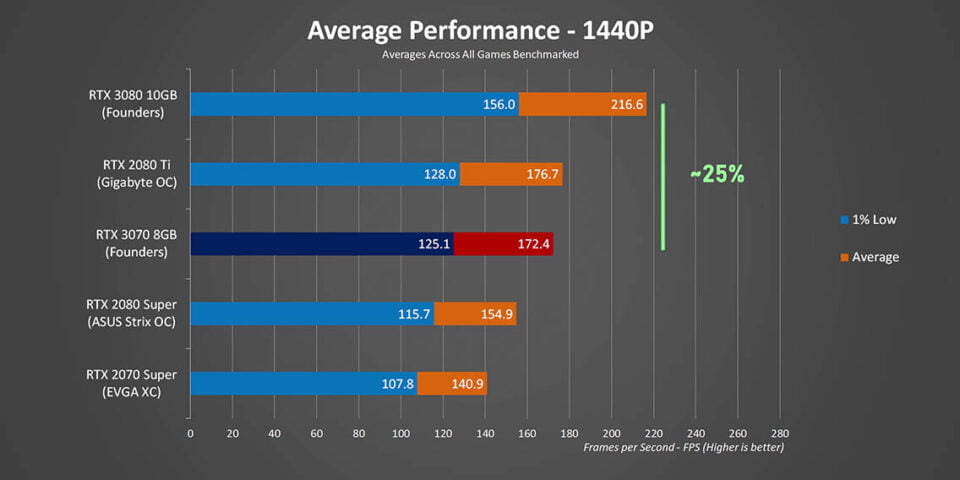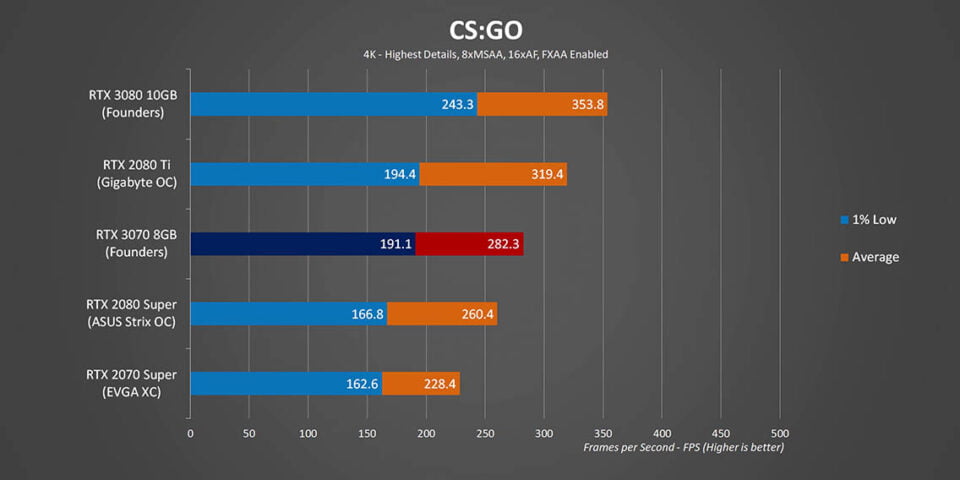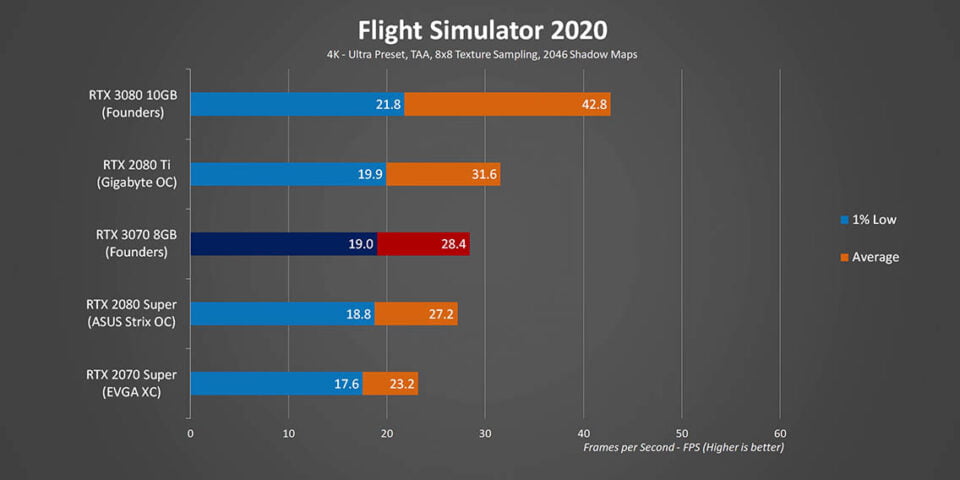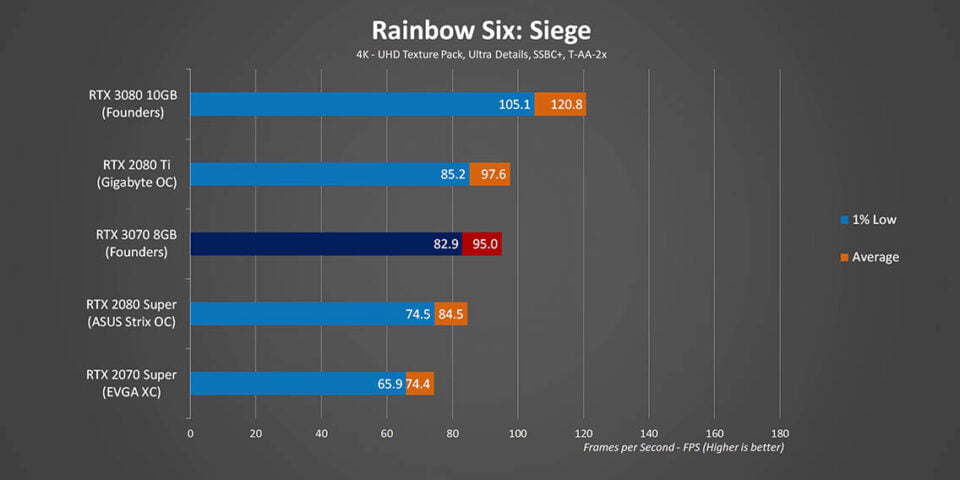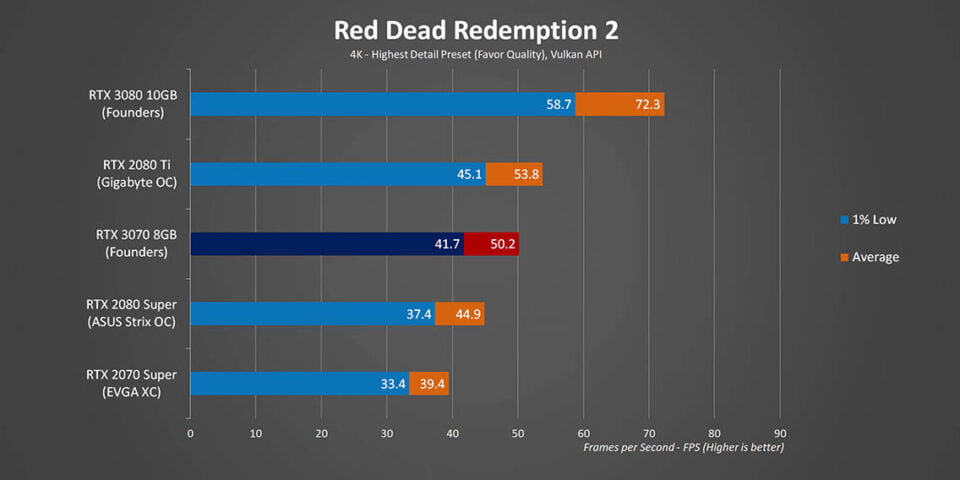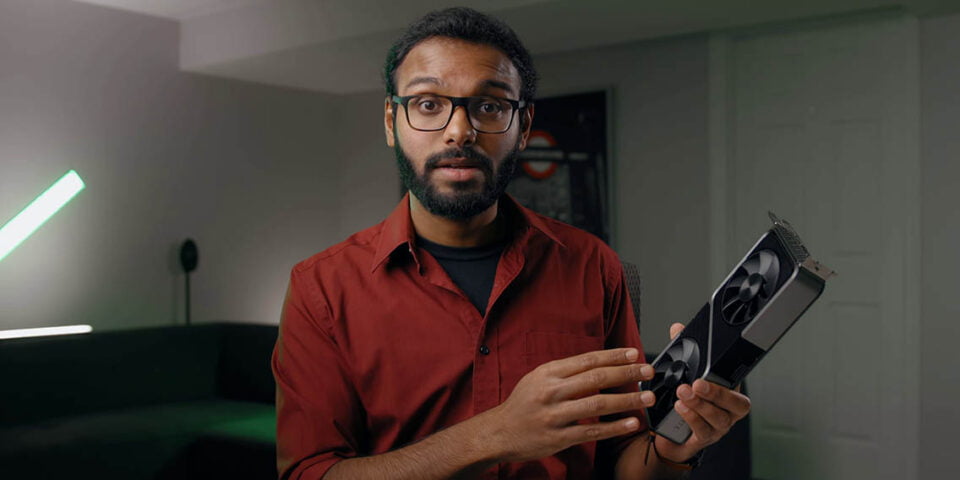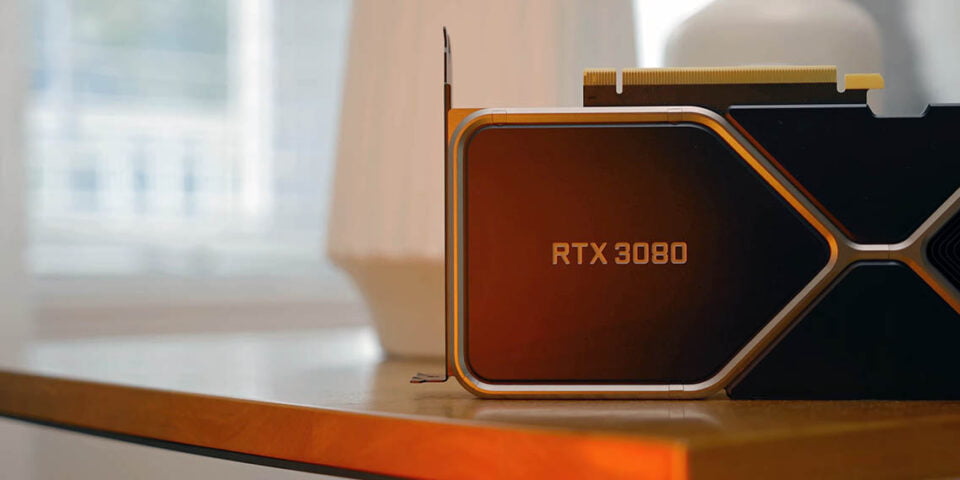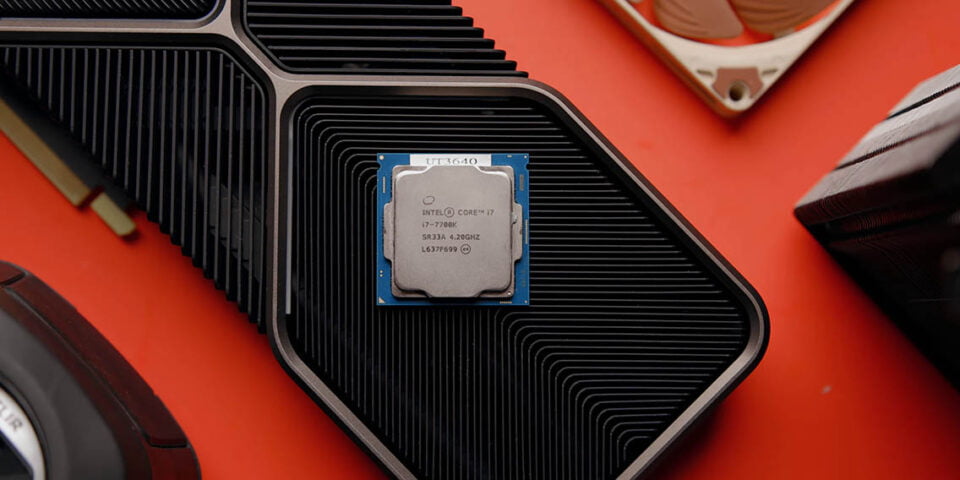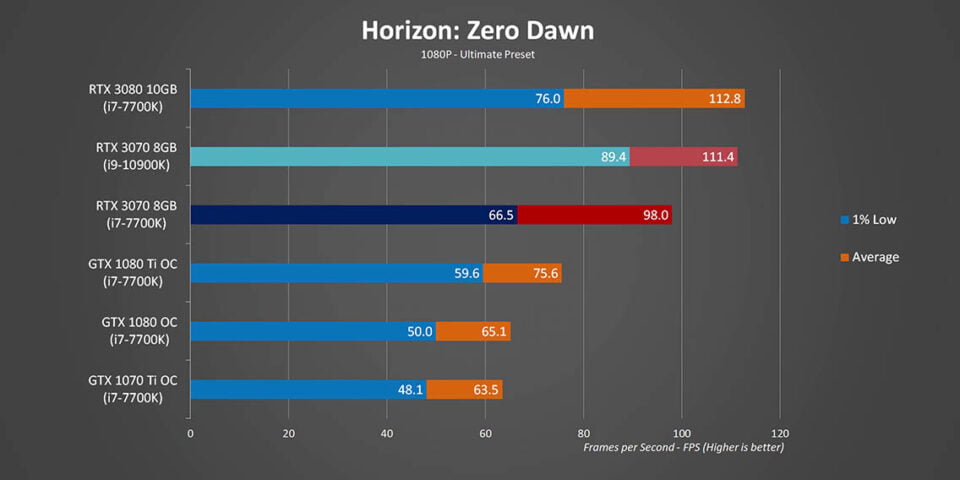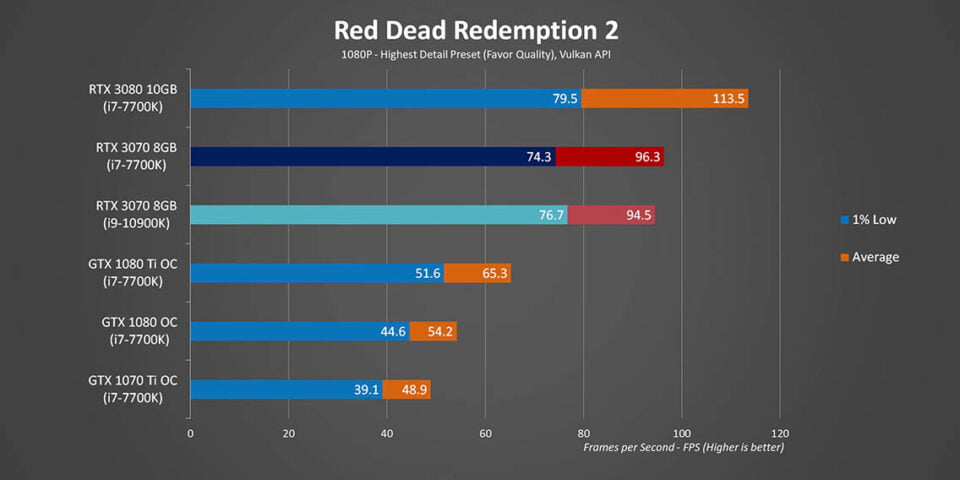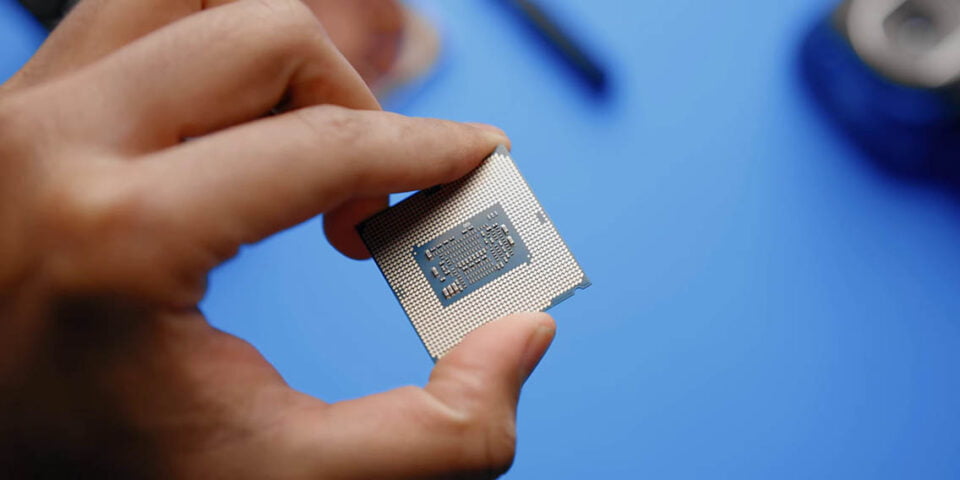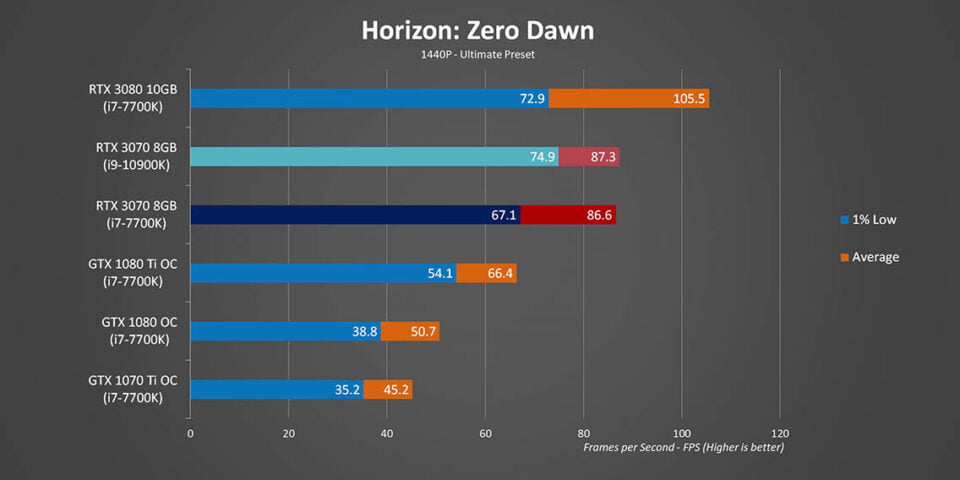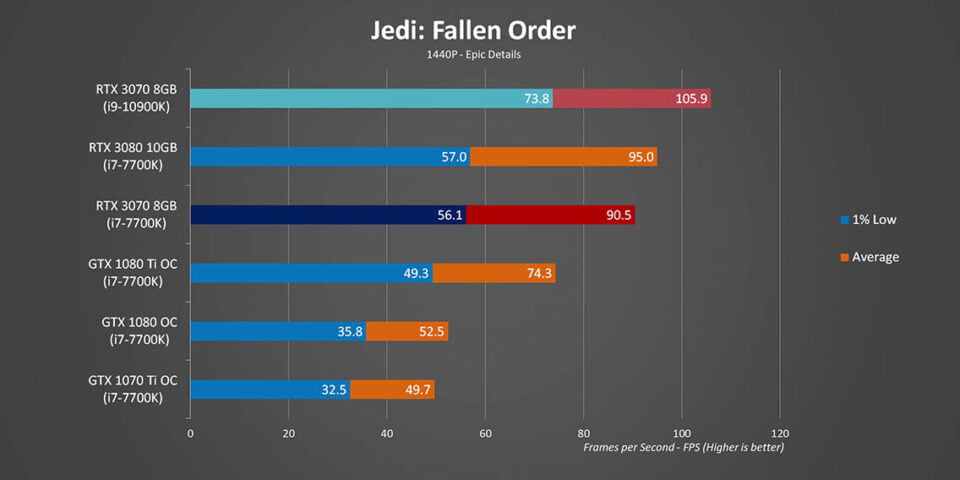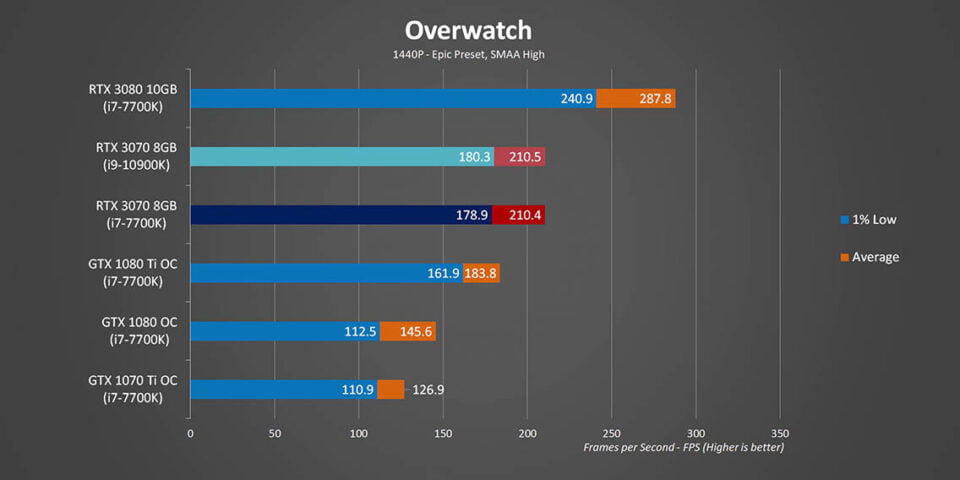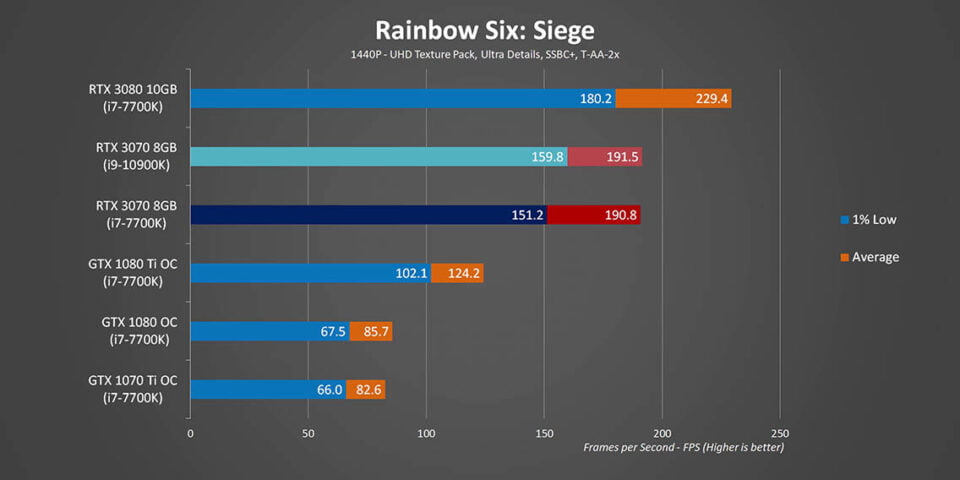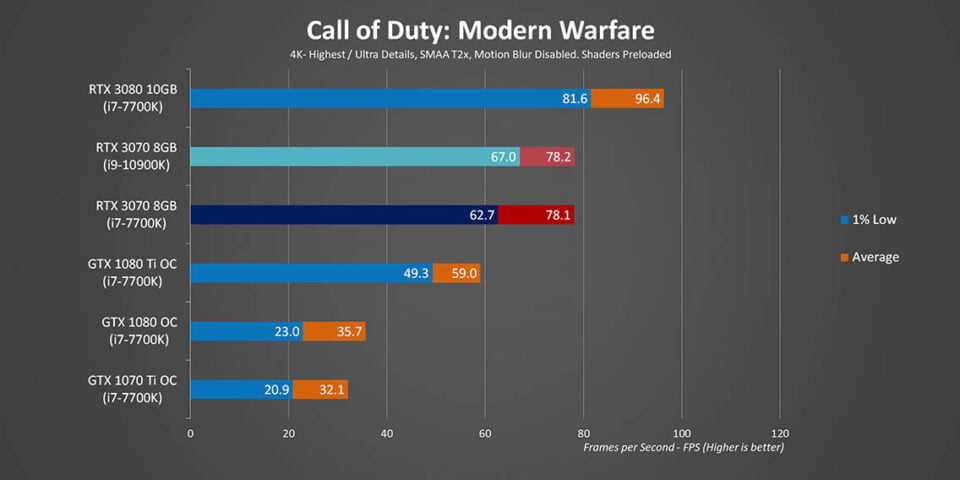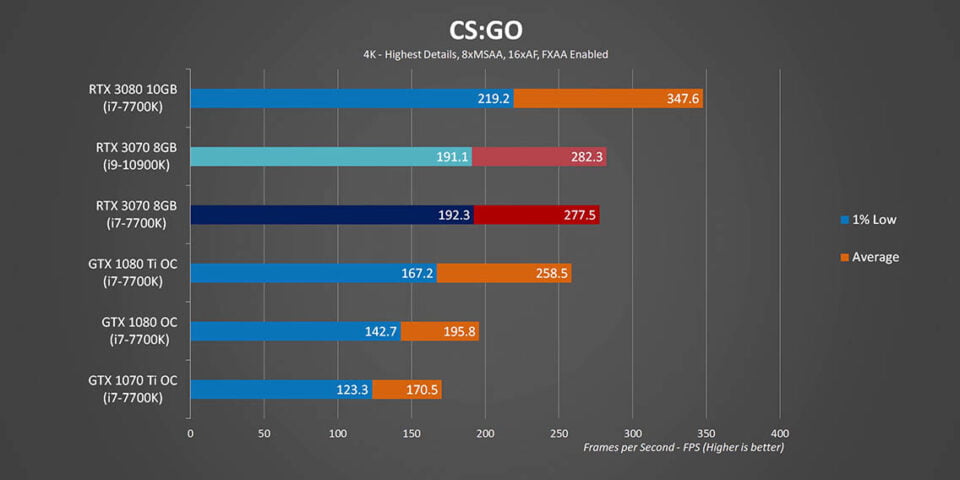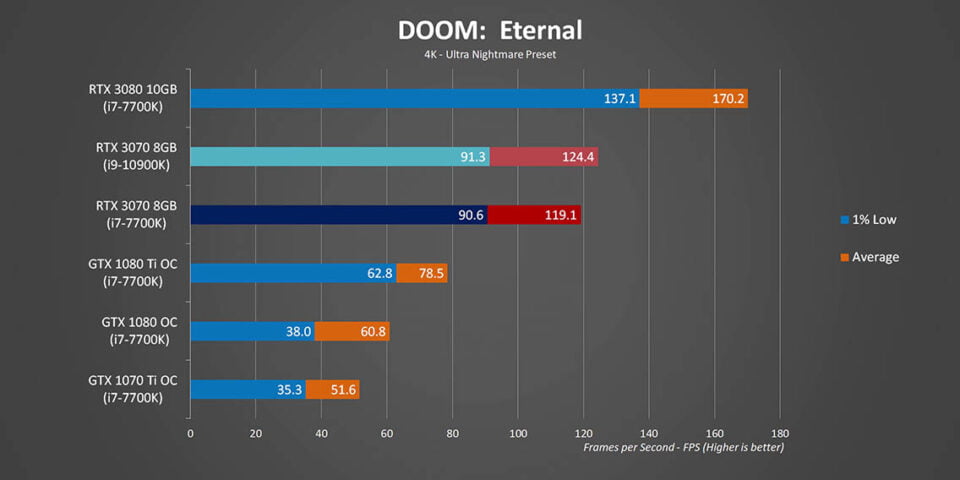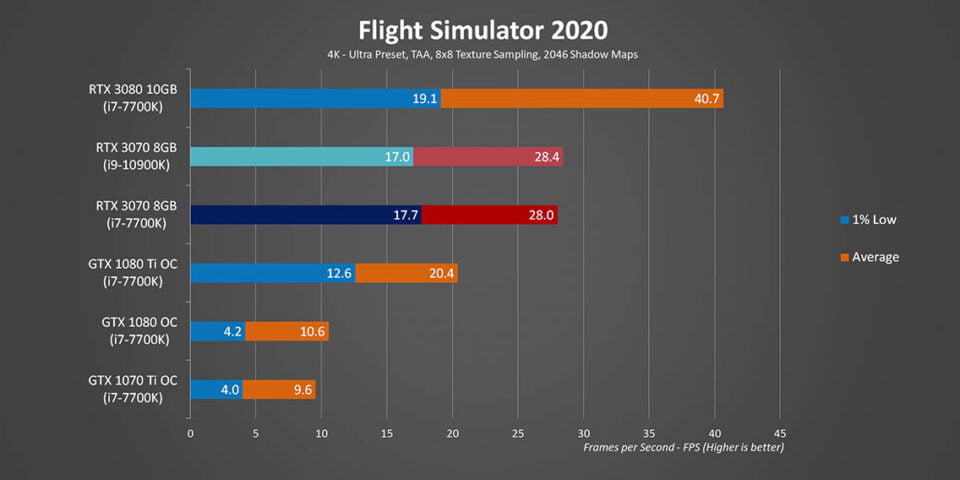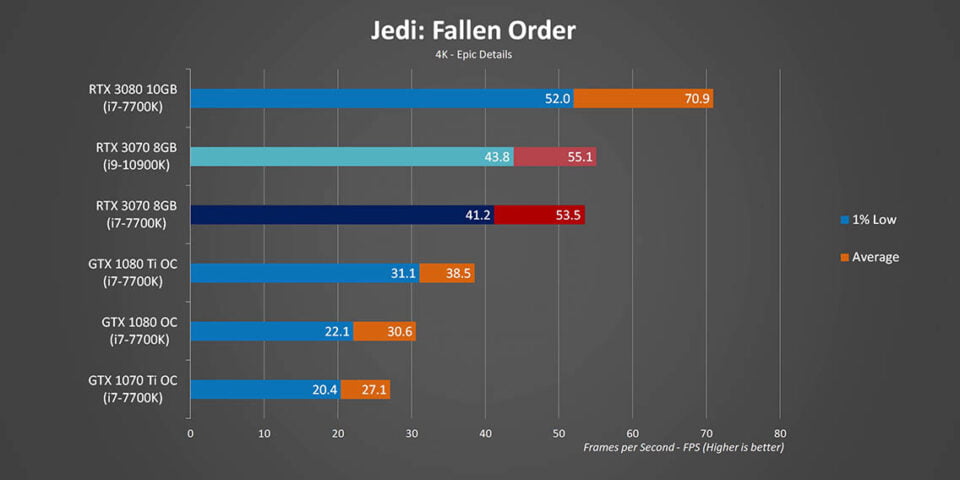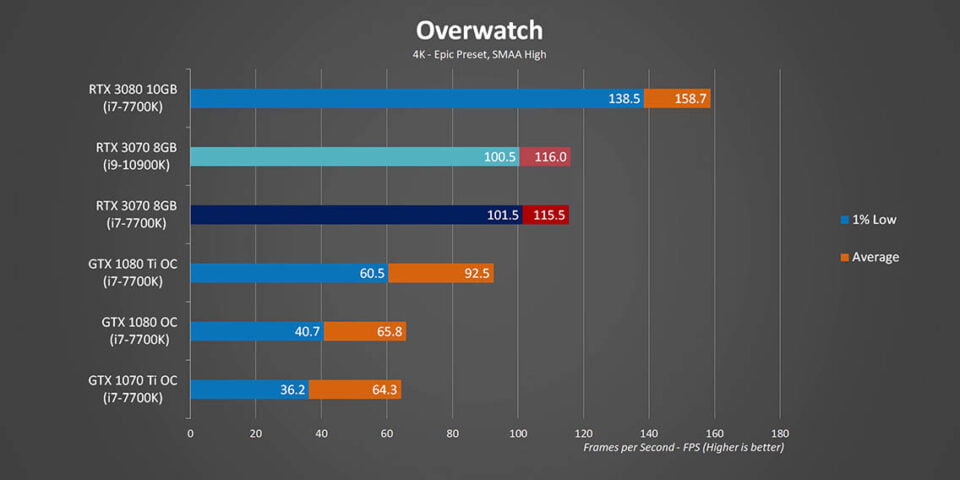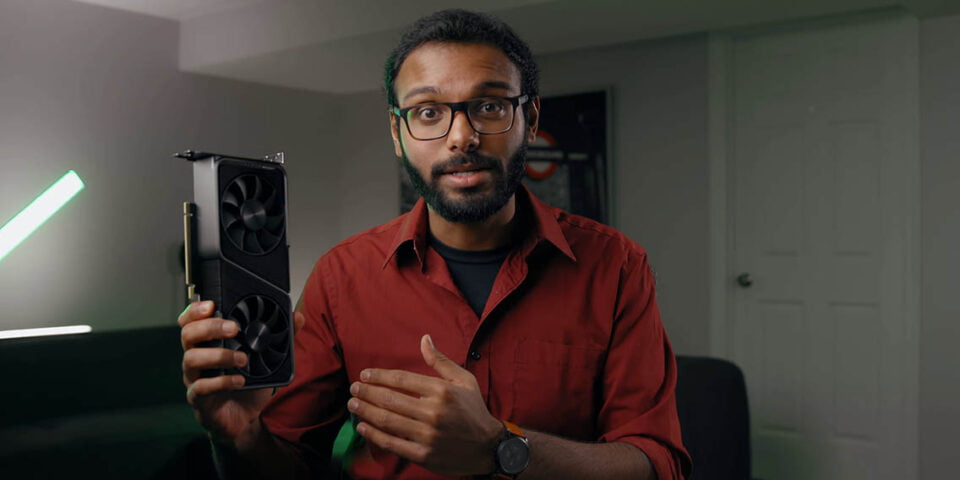RTX 3070 Performance Review & Benchmarks – With a 7700K!

Share:
Table of contents
Almost a month after the RTX 3080 launch and just a few weeks after the RTX 3090 launch, NVIDIA has finally released the RTX 3070. I’m pretty sure you are all are excited for this model is a lot more important for NVIDIA than the other two flagships, because it’s a more affordable option that still offers a ton of performance. I’m pretty sure your notifications are filled with RTX 3070 reviews, so we are committed to give you something a little bit different.
First we will walk you through what exactly you need to know about the RTX 3070 in terms of pricing, availability, and specs. And then we will follow our usual benchmarks methodology by testing this new GPU on our current high-end system at 1080P, 1440P and 4K. However, the majority of this review will follow the same footsteps as our RTX 3080 review, so basically how much of a performance increase you are getting with the RTX 3070 on an older system. Once again we will be testing this thing on a Core i7-7700K and comparing it to a GTX 1070 Ti, GTX 1080, and GTX 1080 Ti.
Specs & Price
On paper at least the RTX 3070 is cut down by a lot from the RTX 3080, and that leaves plenty of room for NVIDIA to launch cards that bridge the gap. It has 5888 CUDA cores with an engine clock of 1730MHz. There is also 8GB of GDDR6 memory operating on a 256-bit interface and providing 14Gbps of memory bandwidth. That cut-down GPU core and slower memory speed causes a pretty big power reduction compared to the RTX 3080, so you will be able to get away with a lower spec PSU between 600W and 650W. In many ways, the RTX 3070 can be considered a natural replacement for the RTX 2070 Super, which was technically launched at $500 USD, even though it was impossible to find one for that price. Naturally, the RTX 3070 has more cores, ROPs, and texture units, not to mention all the improvements NVIDIA has done with their second generation ray tracing architecture.
Another thing that is going to be interesting to see is availability. Supposedly NVIDIA delayed the launch of this GPU to October 29th to build up more stock after the RTX 3080 fiasco. Now the big question is whether or not demand will outstrip supply, and it looks like that is probably going to be the case so finding an RTX 3070 isn’t going to be easy. One last thing, and this is super important, NVIDIA is no longer planning on selling the Founder’s Edition GPU on their official website. They have actually assigned that task to a few retailers. If you are in the United States you can get the FE at BestBuy or Microcenter, and if you are here in Canada it is a Best Buy exclusive.
Design & Dimensions
Now taking a look at the overall design of the Founder’s Edition, I have to say once again that this is simply the best looking RTX 3070 around. By the way, it is only 9.5 inches long, so it’s the perfect size for ITX systems. While this looks like a downdraft style cooler, it’s actually not. The fan closest to the I/O area intakes cool air, and then immediately pushes it out the back while the other fan pushes cool air through the heatsink and right out the other side. There is a no PCB there, which means the actual card is only about 6 inches long. In order to get to that size NVIDIA needed to use their new mini 12-pin power connector, and while you still get a dongle with the Founder’s Edition it still looks pretty terrible. Luckily, some manufacturers like Corsair have begun releasing native 12-pin cables for their PSUs, which look a lot cleaner.
Let’s dive into the benchmarks with our usual Core i9-10900K test system, but we are going to be doing this a little bit differently. Since there are three different resolutions each set of test results will be followed by a performance summary and analysis. We are also going to be adding an RTX 2080 Super and an RTX 2070 Super. Let’s get started.
1080P Gaming Benchmarks
At today’s most popular resolution the RTX 3070 does exactly what NVIDIA said it would in most cases, and that is to deliver performance that is within a few percentage points of the RTX 2080 Ti. The big takeaway here is that some games are CPU limited at 1080P, so if you are playing at this resolution and you have a RTX 2070 Super there is really no reason to grab an RTX 3070 right now. Even the RTX 3080 is only about 18% better than the RTX 3070, which does make the cheaper card look like a pretty good value.
14400P Gaming Benchmarks
Now let’s cut to 1440P testing, and this resolution really seems like the sweet spot for the RTX 3070. Both the 1% lows and average frame rate leads get extended against the RTX 2080 Super and RTX 2070 Super, even though both of those cards are slightly overclocked by board partners here. It is basically a clone of the RTX 2080 Ti’s performance. At the same time, the RTX 3080 stays way ahead by about 25% since it’s lead is getting even bigger with the CPU bottleneck being removed in some games.
4K Gaming Benchmarks
While the RTX 3070 isn’t specifically marketed as a 4K gaming GPU, it can get the job done pretty well all things considered. Yes, the RTX 2080 Ti and the RTX 3080 get further out front, but at the same time the RTX 3070 also moves further ahead of the RTX 2000 Supers as well. At least in the games we benchmarked it doesn’t seem like 8GB of VRAM is going to be a limiting factor for 4K gaming in most current titles.
Power Consumption / Noise / Temps
As for power consumption, well we already knew from NVIDIA’s numbers that the RTX 3070 wasn’t going to be sipping electricity. However, the interesting thing here is its peak power consumption ended up being between the RTX 2080 Super and the RTX 2070 Super, which gives it a much better performance-per-watt ratio than either of those. It’s also quite a bit more efficient than the RTX 2080 Ti, so that’s nice. Temperatures over time were pretty much as expected since NVIDIA’s thermal engineering team seems to have found the secret sauce with their new cooler design. But what about clock speeds? Well those were super stable too. As a matter of fact, it stayed well above the on-paper specs for the entire test. And that is good news since you can be confident that the RTX 3070 will continue to deliver pretty much identical performance over the course of a gameplay session. Now it doesn’t get to these levels with higher noise levels either, since it stayed super quiet on our open test system. It’s actually quieter than the RTX 3080.
Well that pretty much wraps up this part of our coverage, and I have to say that the RTX 3070 delivers better performance at less power compared to the RTX 2080 Super. Now I wouldn’t go out and buy a 3070 if I already had an RTX 2000 Super series GPU, and that is because this doesn’t give you a substantial performance uplift like the RTX 3080 did relative to its price. For example, the RTX 3080 is about 45% faster than the RTX 2080 Super despite launching for the same $700 USD price point. On the other hand, the RTX 3070 gives you roughly 25% higher frame rates than RTX 2070 Super, and both those cards cost around $500 USD. Now it might be that adding ray tracing could change the equation, but that is something that we will have to test out in a separate article. Speaking of the RTX 3080, it’s pretty obvious that NVIDIA left a massive performance hole between it and the RTX 3070 so they could fit another GPU into that lineup. However, I also have to wonder if that hole will give AMD opportunity that they need for the RX6000. I guess that is something that we will find out soon.
What you saw earlier are basically comparative performance results against GPUs that were launched in the last 18 months or so, but what it didn’t cover is the current situation that we know a lot of you are in. Most of you are not rocking a Core i9-9900K or i9-10900K or Ryzen 3000 CPU in your system. Most of you probably also skipped the RTX 2000 series or even the RX 5700 series of GPUs. In our RTX 3080 review we took a chance and included the Core i7-7700K and older GPUs, and based on the positive feedback we got we are doing it happening again. This time we are going down the same road, but we are adding 1080P testing as well as including a GTX 1070 Ti. Remember that was an important GPU too, because it was launched around $450 USD so naturally the upgrade path would be something like the RTX 3070. We will also be including the RTX 3070 with the 10900K, just so you get a frame of reference regarding whether or not the older CPU is causing a bottleneck. Other than that the test systems are completely identical right down to the storage drives.
1080P Gaming Benchmarks – 7700K CPU
Starting at 1080P and right away we can see a trend develop in some titles, and that is the 7700K is a bottleneck sometimes to the point where an RTX 2070 paired up with a 10900K will beat an RTX 3080 + 7700K combo. Not only that, but the difference between the fastest and slowest GPUs at this setting is super narrow. However, there are also plenty of games that aren’t CPU constrained and when you run into one of those situations the RTX 3070 is able to pull really far ahead of the older GPUs.
Another issue at 1080P is much higher 1% lows on a system equipped with a more modern CPU like the 10900K. Overall there can be huge benefits when upgrading from a GTX 1080 or GTX 1070 Ti even at this resolution, yet at the same time there is also a very real situation of diminishing returns in some games. On the other hand, I wouldn’t buy an RTX 3080 to play at 1080P on a 3-year-old system. You are much better off saving some money for a whole system upgrade.
1440P Gaming Benchmarks – 7700K CPU
Moving on to 1440P and it’s a very different story. Sure, there is still a bit of bottlenecking, but the more powerful cards are now starting to stretch their legs. As a matter of fact, the delta between the 10700K and 7700K systems virtually non-existent in most situations. We already saw this in our RTX 3080 review, and it’s the same here. Unlike the 1080P results at 1440P you could pop one of those GPUs into your system and be confident that it will provide an amazing overall gaming experience compared to what you currently have. Add a new SSD into that equation for your game drive and you will have a snappy system that will almost feel like new. It’s really amazing to see how GPU bound games are these days, but that is understandable because CPU performance has been moving at a slow pace so developers have looked towards graphics processors to execute more in-game tasks other than just rendering.
4K Gaming Benchmarks – 7700K CPU
What I said about 1440P is doubled down at 4K. The RTX 3070 just walks all over older GPU’s, offering double or sometimes even close to triple the frame rates. While I’m not sure how many of you are going to pair up an expensive 4K screen with a 3-year-old system, at least you now know there is an option for an incremental system upgrade rather than just buying a whole new setup. Something else jumps out with these results though, at 4K the GTX 1080 Ti is able to hang right in there in some games. It isn’t super competitive in every situation, but it just goes to show NVIDIA’s flagship from 2017 does still have some fight left in it.
Conclusion
I guess it’s time to wrap this up. From a system upgrade perspective the RTX 3070 is a pretty good value provided you are playing at 1440P or higher. When you get down to 1080P though, spending $500 on a new GPU before other upgrades might not be a good the idea. Also remember that these observations can only be applied to gaming since moving to a more modern platform has positive impacts in a lot of other places like rendering times.
The big question is should you jump to the RTX 3070 right now? Well I think this card is being launched at the right price to performance ratio based on the current market right now, but that market can change overnight after AMD’s RX6000 series announcement tomorrow. So I’m going to conclude by saying that most of you probably have a good enough GPU that will get you by until the dust settles up competition wise and stock wise. However, if you absolutely positively need a drop-in upgrade for 1440P gaming, and if you don’t like spending RTX 3080 money, the RTX 3070 is the best option that is available right now.


